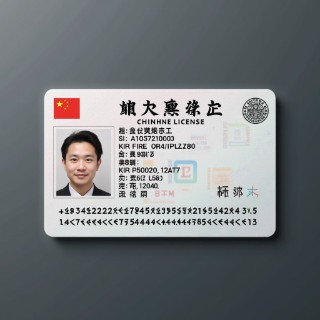My Experience Navigating Legal & Secure Credit Card Withdrawals
-
wodomac204 New
I didn’t think much about credit card withdrawals until the day I tried to move my online winnings back into my account. What should have been a routine click turned into a maze of verification screens, pending notifications, and unexplained “processing” delays. I had always assumed withdrawals were as simple as payments in reverse—but that assumption cost me time and, almost, my peace of mind.
That incident was what pushed me to learn how legal and secure credit card withdrawal really worked, and more importantly, how to make sure every transaction I made followed authorized card operations standards.
Realizing That “Fast” Isn’t Always “Safe”
In the beginning, I equated efficiency with reliability. If a site or app promised same-day withdrawals, I took it at face value. I remember testing a platform that processed payments within minutes—but offered no explanation of its compliance procedures. Later, when I checked my statement, I noticed a small but suspicious authorization hold that I couldn’t identify.
That’s when I learned a critical truth: speed can disguise shortcuts. A secure withdrawal doesn’t just move money; it records, verifies, and reconciles that movement within regulatory boundaries. Anything faster than the legal processing window should raise questions, not excitement.
The Turning Point: Understanding Legal Pathways
My real turning point came after I researched official financial compliance resources. I discovered that every withdrawal system involving credit cards must pass through issuer-approved channels. These channels track transactions for fraud prevention, anti-money-laundering controls, and consumer protection.
For instance, reputable services like singaporepools outline their entire payment chain—how funds are validated, authorized, and released. That level of transparency reassured me that oversight wasn’t an obstacle; it was protection. I began to see legal compliance as the foundation of trust, not red tape slowing me down.
The First Step: Rebuilding My Own Process
After a few frustrating experiences, I designed a personal withdrawal protocol. Before initiating any transfer, I would confirm three things:
- Licensing and Regulation: I’d check whether the platform displayed its financial authorization or banking partnerships.
- Authorized Channels: I’d ensure every transaction flowed through recognized authorized card operations, avoiding third-party intermediaries that obscure accountability.
- Communication Logs: I’d document confirmation emails and timestamps, in case I ever needed to trace a payment dispute.
This method transformed my approach from reactive to strategic. I no longer waited for issues—I anticipated them.
Learning to Trust Verified Networks
The most reassuring part of this journey was realizing that legitimate institutions always welcome scrutiny. When I reached out to singaporepools support about their withdrawal verification procedures, they didn’t brush me off. Instead, they explained their card authorization process step by step: confirmation through card-issuing banks, validation of identity against registered accounts, and reconciliation with their payment provider’s daily audit logs.
That transparency wasn’t just customer service—it was accountability in action. From that day, I began to trust networks that didn’t just promise security, but demonstrated it in plain language.
Recognizing Red Flags the Hard Way
Not every experience was positive. Once, I ignored my own checklist and attempted a withdrawal on a site that offered “guaranteed same-hour payouts.” Within hours, my card provider flagged the transaction as irregular. It took two days, three verification emails, and a call to my bank to confirm it wasn’t fraudulent.
That moment reminded me how easy it is to let convenience overshadow caution. Whenever a platform discourages communication, refuses documentation, or redirects you to vague third-party processors, that’s a signal to stop. I started to treat those red flags as non-negotiable deal-breakers.
Understanding the Role of Legal Jurisdictions
Every region applies different laws to digital credit transactions. In my case, I had to learn how jurisdictional differences affect withdrawal times and methods. Some countries require two-step verification for every outgoing credit transfer; others rely on real-time authorization networks.
It took me a while to grasp that delays weren’t always a sign of incompetence—they often indicated compliance with national anti-fraud systems. When a withdrawal took longer than expected, I began checking whether new local regulations were in play rather than assuming fault.
This shift in mindset turned waiting from frustration into reassurance; if a system was slow because it was following the law, it was working as intended.
Crafting My “Secure Withdrawal Routine”
Over time, I built a repeatable process that combined security and efficiency. It looked something like this:
- Use verified financial gateways only. Never enter card data into pop-up pages or redirected domains.
- Keep one dedicated card for digital payouts. It simplifies tracking and minimizes exposure.
- Confirm every transaction through the card issuer’s app. Instant alerts let me stop unauthorized withdrawals early.
- Retain withdrawal receipts for 90 days. Dispute windows vary, and documentation strengthens any claim.
- Reassess platform compliance quarterly. I revisit each service’s licensing updates to ensure they remain legally aligned.
This checklist didn’t make withdrawals glamorous—but it made them predictable, and predictability is what true financial safety looks like.
What I Learned About Accountability
There’s a moment of calm that comes when you know your funds are moving through legitimate, transparent channels. I’ve learned that trust isn’t built on brand names—it’s built on verifiable processes.
When I see references to authorized card operations, I think of the invisible infrastructure protecting both sides of a transaction: the merchant, the card network, and the user. It’s not exciting, but it’s the foundation of every legal and secure payment I make today.
In fact, I’ve come to view credit card withdrawals the same way I view air travel—most passengers focus on takeoff and landing, but the real safety lies in the systems constantly monitoring everything in between.
How My Perspective Changed
Before this journey, I equated complexity with inconvenience. Now, I recognize that complexity often equals safety. Each verification prompt, delay, or identity check is a small price for assurance.
I no longer chase the fastest option. Instead, I choose the one with clear oversight, transparent operations, and direct partnerships with card networks or institutions like singaporepools that value regulatory compliance.
That mindset shift has saved me more than just money—it’s saved me from unnecessary anxiety.
Closing Reflection: From Frustration to Confidence
Looking back, my journey began in confusion and ended in control. What once felt like a tedious process now feels empowering. I understand how the system works, I know what to check, and I trust that legal oversight exists for my protection—not to slow me down.
Secure credit card withdrawals aren’t about beating the system; they’re about aligning with it. And once I learned that, every transaction became not just faster, but genuinely safer.
In the end, my biggest takeaway is simple: when it comes to moving money, transparency is peace of mind. And I’ll gladly take a few extra minutes for that kind of certainty every single time.



